What Is The Right Age For Children To Learn Yoga (Answered!)
4-9 years is an ideal age for kids to start practicing yoga. At these ages, kids are more flexible, unbiased, and can easily take instructions.
Starting yoga at an early age improves a kid’s concentration, discipline, and self-esteem. It also improves posture and immunity while promoting their physical and mental growth.
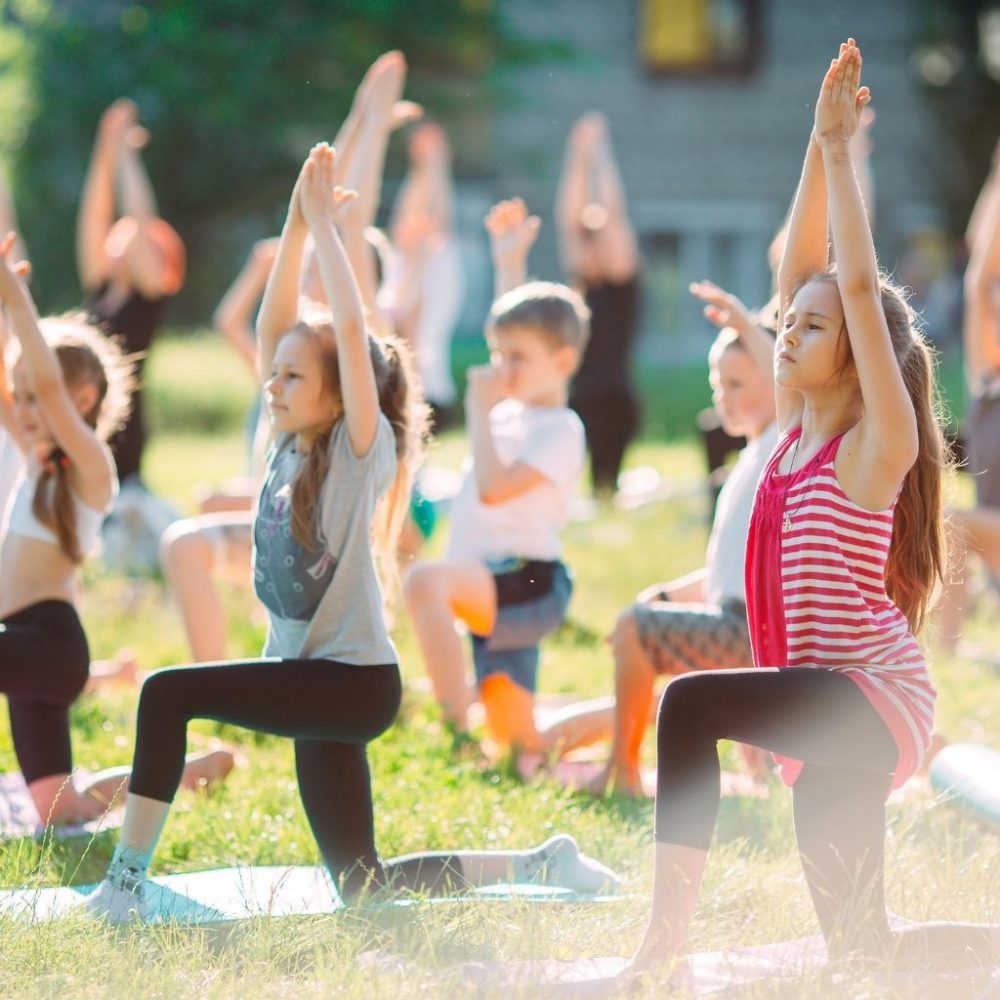
If you want to introduce your preschooler to yoga, there is no better time.
This article answers your questions on yoga for children, including the benefits, sample yoga plans for different age groups, and the poses that your child should not do until their body is mature.
Let’s get started!
How should your children’s yoga class be?
A children’s yoga class should have short sessions (10-30 min), be flexible, and spontaneous. It should involve lots of fun activities like singing, play-acting, and games. Additionally, holding yoga classes outdoors or in a well-lit, airy room with lots of free space helps kids relax and absorb the lessons better.
Kids naturally love stories, playing, exploring, and singing. They usually don’t have long attention spans and get tired quickly. A good yoga class shouldn’t be too rigid, strict, or physical.
Here are sample yoga plans for kids in different age brackets.
Sample yoga plan for preschoolers(4-6 years)
A yoga plan for this age group should involve lots of physical activities like singing and dancing. Preschoolers have boundless energy, short attention spans, and are naturally playful.
Step by step breakdown of a preschooler yoga plan
- Set the mood by sitting round in a circle and holding hands. This fosters a sense of belonging and togetherness.
- Use simple terms to explain yoga poses, like, butterfly pose, snake belly stretch, etc.
- Use simple physical exercises like the bumblebee breath pose where kids buzz through their mouths. This is a good breathing exercise.
- Introduce classical yoga poses with kid-friendly terms, i.e., the cobra pose where kids raise their torso and hiss before lowering themselves.
- Feature games and creativity by having kids practice their favorite animal poses with each other.
- Introduce guided relaxation/meditation by having kids close their eyes and recreate an animal or plant life story, i.e., how a seed grows into a tree. This promotes creativity and critical thinking.
Sample Yoga plan for 7-9 year-olds
Meditation, critical thinking, and physical development for kids between 7 to 9 yrs help their overall growth.
Incorporating physical yoga exercises with group activities will help grow the kid’s self-esteem, confidence, physical and mental health.
Use yoga to lay the foundation of love, mutual respect, understanding, and cooperation.
Step by step sample yoga plan for 7 to 9-year-olds
- Start by explaining the theme of the class.
- Use simple relaxation exercises to start the yoga sessions. The focus should not be on alignment but rather on making the activities playful and fun.
- Incorporate games and singing to make the sessions fun and friendly.
- Use common animal, insect, or plant examples to explain yoga poses. For example, the snail belly crawl.
- Use lots of meditation and relaxation exercises as kids in this age bracket understand things better than preschoolers.
- Pair kids to perform joint exercises which instills values of cooperation and partnership.
- Take frequent breaks during the session as the kid’s attention span is still low.
Sample yoga plan for 10 to 12-year-olds
Yoga is vital for preteens with their fast-developing bodies, curious minds, and need for acceptance.
Preteens understand complex instructions, can do more elaborate yoga poses, and understand meditation better.
Yoga for preteens boosts their confidence, self-awareness, concentration, and proactiveness.
Making your yoga sessions cool to hook preteens
- Start with hip music that is trending. This will make the kids relax and get into the groove.
- Use lots of positive speech as preteens are more vulnerable to body shaming and esteem issues.
- Incorporate various cool yoga exercises such as acrobatics, dance drama, or martial arts.
- Add meditation and relaxation techniques style=”font-weight: 400;”> to help the kids develop their mental strength.
- Include pairing exercises, great for fostering cooperation and partnership in the kids.
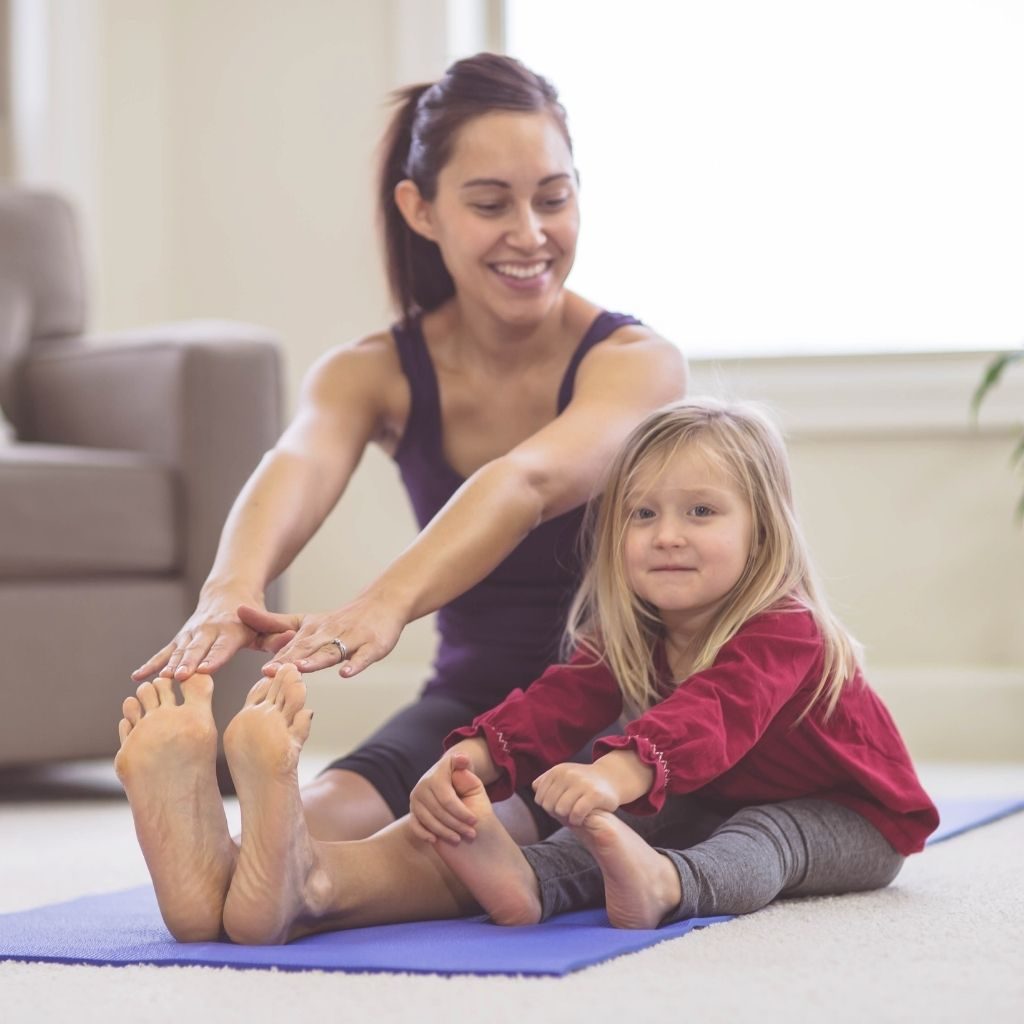
Can children learn and practice at home?
Yoga is a relaxing physical and mental exercise that can be done anywhere calm, especially at home.
Even though most yoga sessions are held in yoga gyms and studios, kids practicing yoga at home is a simple, cost-effective, and practical substitute.
Practicing yoga at home has many benefits, including flexible schedules, freedom of space, and reduced traveling time. Home yoga also improves savings since it’s free, and relaxation due to the familiarity of the location.
Additionally, kids develop discipline, time-keeping skills, confidence, self-awareness, and self-esteem by practicing yoga from home.
How can kids practice yoga at home?
Practicing yoga at home for kids is safe, friendly, and straightforward.
Yoga doesn’t require lots of space, complex equipment, or technical know-how and the set-up is quite simple.
Tips on how kids can enjoy yoga at home
- Kids need to first understand the importance of yoga.
- Use short and flexible yoga sessions to keep kids engaged and excited.
- Adapt yoga exercises that mirror what the kids can see at home. For example, the dog pose or warrior pose.
- Use a yoga sequence or routine style=”font-weight: 400;”> to keep kids engaged from start to finish.
- Start early in the morning when kids still have lots of energy.
- Maintain consistency in practicing yoga to develop the kids’ level of discipline.
- Practice yoga with the whole family to help build trust.
- Use available equipment and accessories. Kids can use pillows as bulwarks and books as blocks.
Keep the following in mind to ensure safe and effective yoga sessions for kids at home.
1. Keep the practice area safe
Maintain the safety of kids doing yoga at home by keeping their practice area free from clutter like furniture, equipment, etc. Yoga is physical and involves lots of stretching and movements, which may be dangerous to kids if unsupervised.
Use soft, non-slip rubber mats that can absorb impact in case of a fall. Additionally, kids should understand the danger of trying challenging poses like headstands.
2. Start with a warm-up
Kids can warm up with simple kid games like jumping, running, breathing, and stretching exercises. Warm-ups raise body temperature, improve blood flow, and flexibility. They also reduce soreness, prepare the kids mentally and reduce the chances of accidents.
Warming up will help kids get into the groove and make them more receptive to the yoga session.
3. Start with simple poses
Kids should start with simple yoga exercises like breathing, stretching, and meditation exercises. This will help them loosen up before attempting more complex poses.
Simple exercises allow the kids to grow into the session and get their groove on. Starting with strenuous activities may turn them off, which reduces the session’s effectiveness or even lead to accidents.
4. Use normal games in yoga sessions
Kids love playing, and incorporating games into a yoga session will excite and hook them. Games allow kids to fully express themselves during the yoga session, achieving their session goals.
Games promote muscle growth, improve eye-to-hand coordination and allow kids to develop their creative side.
5. Create a peaceful environment
Have a designated room/area for yoga to maximize its benefits to your child. Yoga thrives in calm and peace. The room should be well lit, airy, and spacious. Conducting yoga sessions outdoors is great since nature helps in relaxation.
The yoga area should be free of clutter, clean, and well organized. Having a firm and straight wall to act as a prop is excellent for stretching exercises.
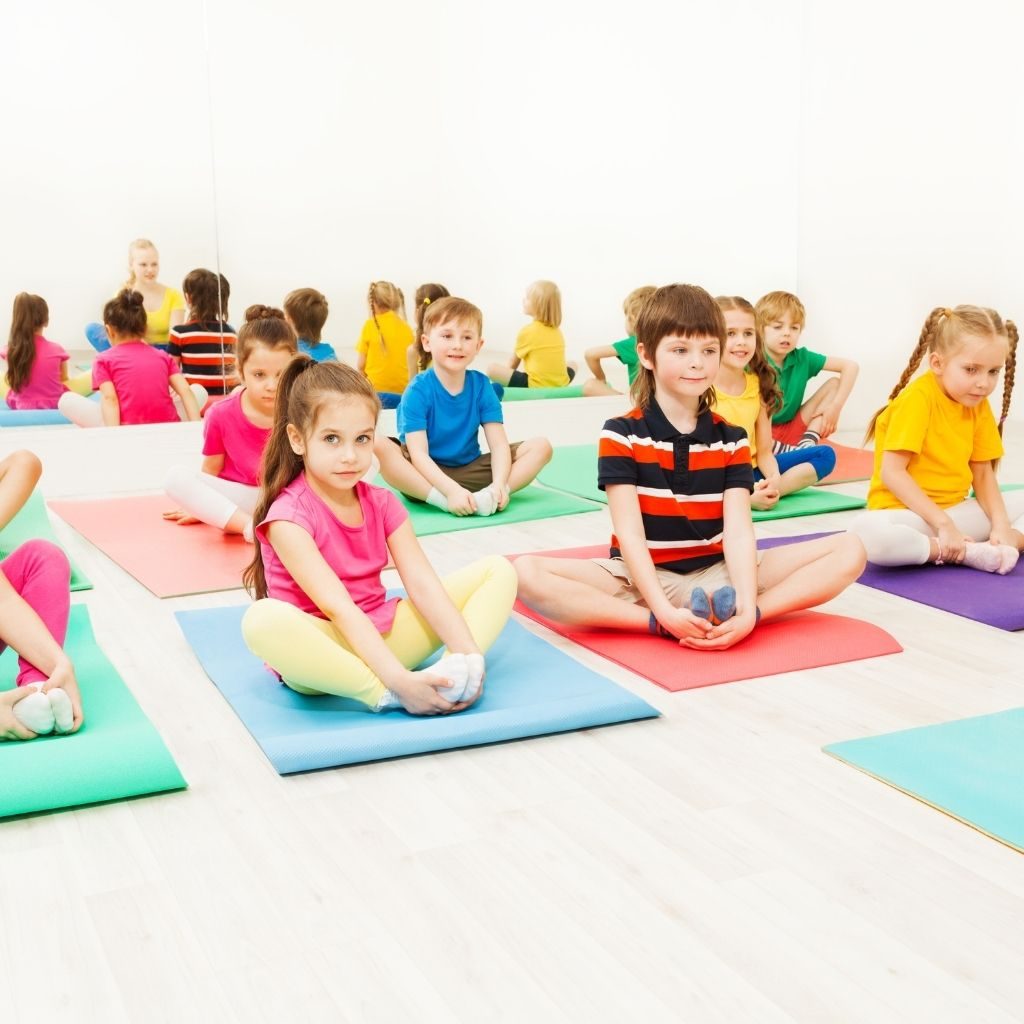
Can a child below 4 years practice yoga?
Children below 4 years can practice some yoga-like breathing techniques, downward-facing dogs, legs up the wall, and other simple poses, but they should be supervised at all times.
Yoga for young kids develops their muscles, mind, and brains. Yoga sessions for very young children should be light, fun, and flexible, emphasizing having a good time.
Introducing kids to yoga from an early age will set the foundations for their future development and growth.
And although introducing kids to yoga is a noble gesture, trainers and parents should be prepared for the challenges of training young minds.
Here are some challenges that affect very young kids and how to work around them in yoga.
1. Use games to counter their short attention span
Very young kids can’t concentrate for long and must be engaged using games, songs, and visual cues to keep them engaged.
The use of simple exercises such as dog pose, fish pose, tree pose, and boat poses are relatively easy and fun for kids.
2. Start with suitable exercises for their undeveloped muscles.
Young kids haven’t fully developed their muscles and, as such, can’t perform challenging poses. On the contrary, these kids are very flexible, and posture exercises are great for them.
Flexibility and posture exercises are suitable for young kids to develop their muscles and maintain flexibility.
3. Supervise all yoga sessions to avoid injuries
The lack of muscle strength coupled with natural curiosity may lead to injuries. Closely monitor young kids doing yoga at all times to avoid injuries.
Kids should always avoid high-risk yoga exercises.
4. Use relaxing music to prevent anxiety
The use of relaxing music and other fun activities like singing may calm kids allowing them to enjoy practicing yoga.
Children often get anxious when faced with difficult or stressful situations.
Introducing complex poses, instructions, or exercises can make a kid tense which is counterproductive.
Wanna know more? 👉 Here Can a 3-Year-Old Do Yoga?
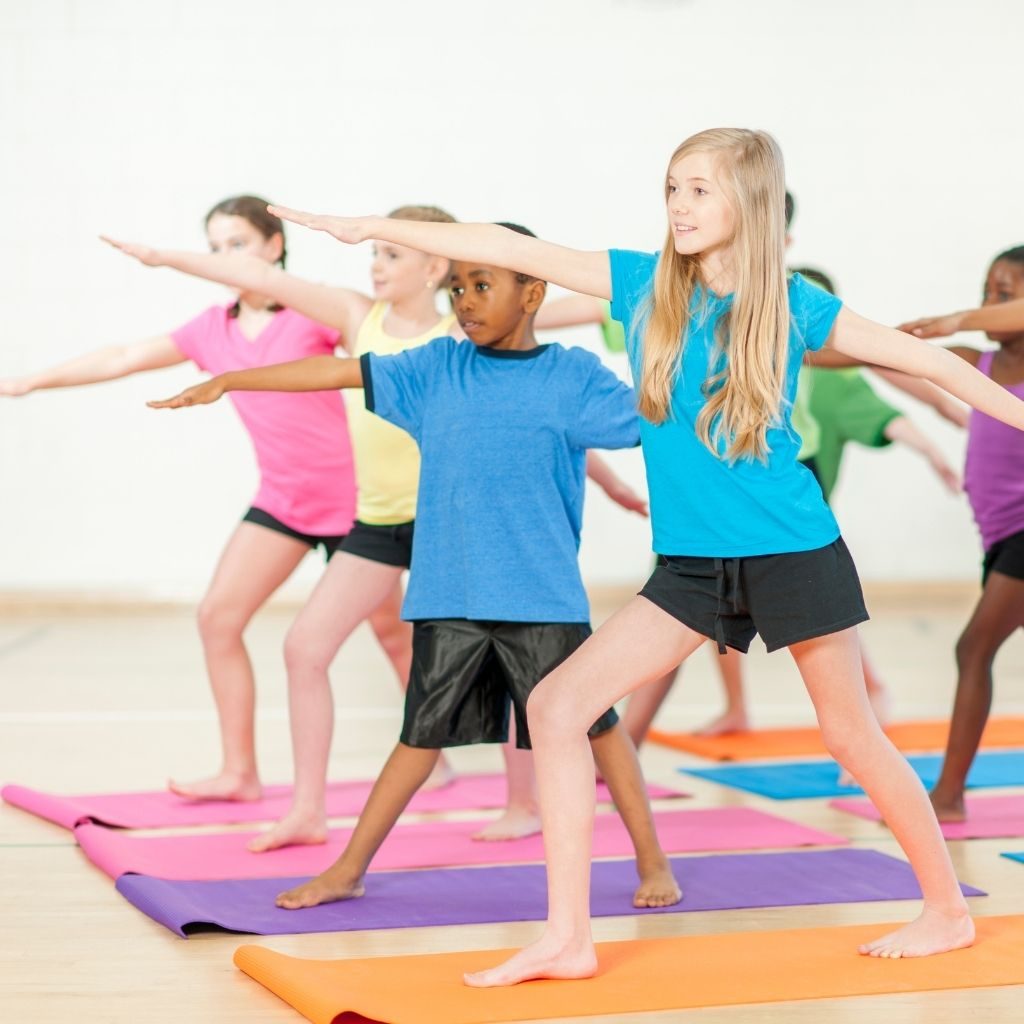
What are practices that shouldn’t be taught to children until their bodies mature?
Yoga with its various asanas is physically demanding and can pose serious health risks to young kids whose bodies haven’t fully matured.
Avoid physically strenuous forms of yoga-like the shoulder stand, forearm stand, plow, headstand, and four-limbed staff pose. Children are prone to accidents with their soft bones and tendons, underdeveloped muscles, and short attention spans.
Reduce the risk of injuries to kids; simple yoga exercises should be introduced first, with a gradual progression based on the kid’s level of mastery in previous activities.
The yoga poses that kids should not do
The shoulder stand
The shoulderstand places undue pressure on the spine, neck, and back of kids resulting in back and neck problems, fractures, and displacements.
The forearm stand
The forearm stand may lead to forearm, back, and shoulder injuries due to their intense nature.
The plow
The plow places a lot of strain on the spine, back, and neck leading to strain, fracture, and back problems.
The four-limbed staff pose
If done incorrectly, the four-limb staff pose can tear the rotator cup and severely strain the arms and legs of the kid.
The headstand
This exercise strains kids’ neck, head, and spine and may lead to strokes, fractures, nose bleeds, and back problems.
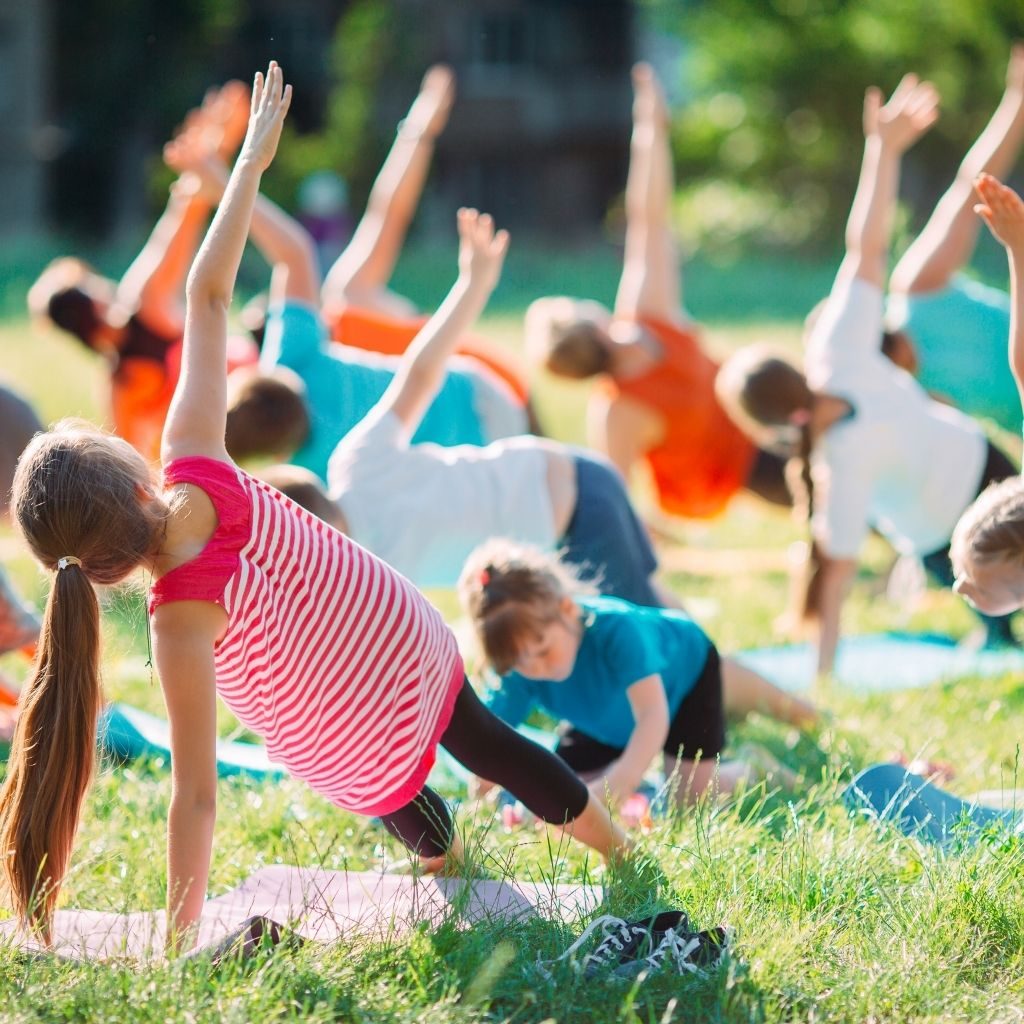
5 Amazing benefits of yoga for children
Yoga is a body and mind exercise that offers immeasurable benefits to children’s growing bodies and minds.
Some of the benefits of yoga include the following.
Yoga improve strength and flexibility
Yoga poses and exercises stretch the body, build muscles and improve the general physical wellbeing of children.
This is vital for growing bodies to become healthy and robust.
Instill discipline and self-control with yoga
Calmness, meditation, and touching the inner being instills a sense of discipline and self-control in kids.
The effort of perfecting poses and being physically active improves a kid’s general character making them calmer and more understanding.
Yoga enhances concentration and memory
Yoga brings calmness and clarity of mind, two critical factors in developing concentration and memory.
Kids who practice yoga do better in class, are better behaved and focus for extended periods.
Yoga increases both inner and outer awareness
The deep calmness and concentration of yoga allow kids to develop acute self-awareness. Meditation and yoga postures improve and refine the kid’s spiritual connection to themselves and their surroundings, which enhances awareness.
Boost Self-esteem with yoga
Perfecting a pose, nailing a routine, or achieving some level of success in yoga boosts a child’s self-esteem.
Since yoga builds both body and mind, kids feel better about their physical and mental health, which boosts their self-esteem.
Conclusion
Yoga is a popular mind and body relaxation exercise that offers numerous advantages to kids.
The right age for children to learn yoga is 4 to 9 years. Yoga helps kids develop and improve their physical and mental abilities. Additionally, yoga boosts self-esteem, improves attention and focus, and instills self-control. And while yoga is perfect for kids, close supervision and proper transitioning should be applied to avoid injuries.

